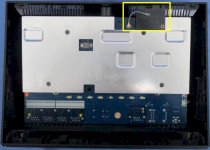I know you're talking about AC86U but if it can help : I got a 6°C drop on CPU just placing my AC88U vertically (LAN ports on top) instead of horizontally!! Greater than expected... (Now 63°C)
(Vents and internal radiators position facilitate the hot air evacuation this way it seems!) Cheerz' & keep cool ✌
(Vents and internal radiators position facilitate the hot air evacuation this way it seems!) Cheerz' & keep cool ✌





